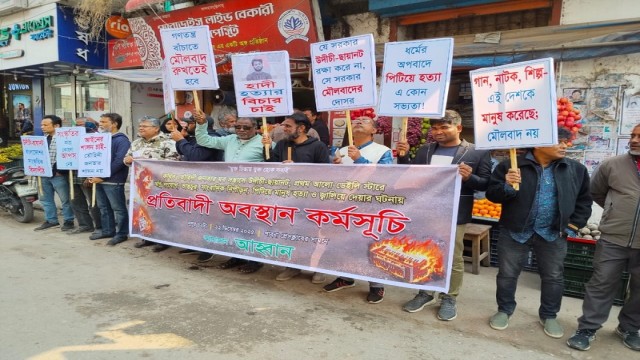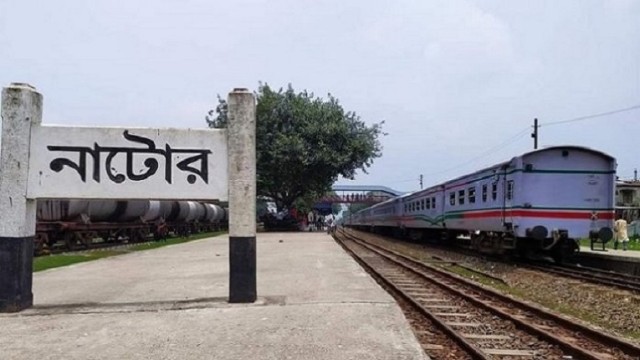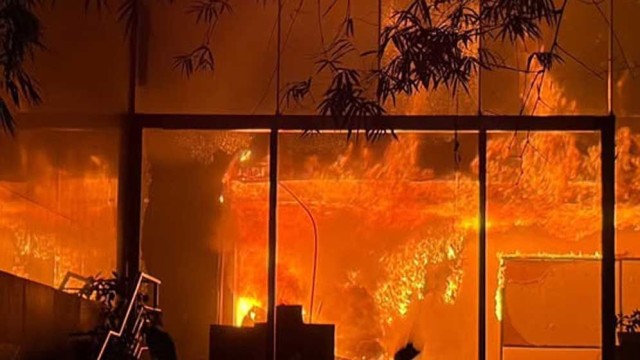Pirojpur, Dec 16, (V7N) - Pirojpur, Bangladesh – In a concerning environmental and agricultural crisis, five illegal dams constructed by affiliates of the ruling Awami League have caused severe disruptions in the water flow in the Mirukhali Union of Mothbaria Upazila in Pirojpur district. These dams have led to flooding, waterlogging, and acute water shortages, impacting over a hundred thousand people.
Impact of Illegal Dams
The five illegal dams, built in the Doga Line and Bhuta Khals of Badura village, have obstructed the natural water flow, causing significant damage to the local ecosystem. The construction of these dams has led to serious water stagnation during the monsoon, while also causing a severe water shortage in the dry season. This crisis has left farmers and fishermen struggling for a livelihood, as vast stretches of agricultural land and fish farms remain uncultivated and fishless.
Local residents have long demanded the removal of these dams to restore the natural water flow, which is essential for farming and fishing. However, despite repeated appeals to the authorities, the issue remains unresolved. Recently, construction work for a new bridge has begun in the area, which some suspect is another tactic to prevent the removal of the illegal dams. Meanwhile, others have started occupying the banks of the canals and are even planting trees and constructing buildings on the land.
Agricultural and Fisheries Impact
The agricultural and fisheries sectors in this area have been devastated by the obstruction of the canals. The area was once known for its rich fish breeding grounds, but due to the dams, fish cannot breed as they are unable to enter the stagnant water. The crisis has left hundreds of fishermen without work, while agricultural land, which was once used for cultivating three crops annually, has remained fallow for years.
In the past 14 years, around 4,000 acres of agricultural land, once highly productive, have remained uncultivated. This is a direct result of the dams blocking water from flowing naturally into the fields. As a result, farmers have either left the area or taken up other jobs in urban centers, further exacerbating the economic hardship in the region.
The crisis is not just affecting livelihoods but is also contributing to the loss of biodiversity. The stagnant water is increasingly becoming unsuitable for both agriculture and aquatic life. The area’s once-thriving ecosystem is now a shadow of its former self.
The Continuing Struggle for Justice
The local community has been vocal about the need to remove these dams and restore the water flow. Shah Alam Hawlader, a local resident of Badura village, has stated that he has repeatedly submitted complaints to the relevant authorities but has yet to see any action. Similarly, Roknuzzaman Sharif, the General Secretary of the Mothbaria Press Club, has led several protests and petitions for the removal of the dams, but the authorities have remained largely unresponsive.
Despite the ongoing protests, the authorities, including the Water Development Board of Pirojpur and Barisal, the Upazila Executive Office, and the Department of Agriculture, have failed to take effective action. All departments have acknowledged the situation and recommended the removal of the dams in their reports, but coordination between these agencies has been weak, and no tangible progress has been made.
The Role of Local Authorities
The local agricultural officer, Moniruzzaman, mentioned that their office had sent numerous requests to the concerned authorities to take action. However, these requests have been met with little more than vague promises and inaction. The lack of coordinated response from the authorities has led many to believe that political interests are preventing the removal of the illegal dams, as they are allegedly being used by political affiliates for personal gain.
Environmental and Health Concerns
The blocked canals have caused serious environmental problems. Waterlogging during the rainy season has led to the spread of waterborne diseases, affecting public health. In the dry season, the lack of water has left the community facing a severe water shortage. The area’s ecosystems, including both agricultural and aquatic life, are on the brink of collapse, which could have long-term consequences on food security and biodiversity.
Experts emphasize the urgent need to address the issue of illegal dams. Environmentalists suggest that restoring the natural water flow through the removal of these dams is essential not only for the agriculture and fisheries sectors but also for the health and well-being of the local population. Without action, the region will continue to suffer from the negative effects of water mismanagement, which could lead to even more severe environmental and social crises in the future.
Conclusion and Recommendations
The situation in Pirojpur highlights the pressing need for effective governance, coordination among different agencies, and a focus on sustainable development. It is crucial that the authorities act swiftly to remove the illegal dams and restore the natural flow of water to prevent further damage to the local agricultural and fishing industries, as well as to protect the livelihoods of the people.
The community’s repeated calls for justice must not go unheard. Government agencies must prioritize environmental protection, agricultural sustainability, and the health of the people by taking immediate action to remove the dams. Without this, the ongoing crisis will continue to worsen, affecting not only Pirojpur but potentially setting a precedent for environmental mismanagement elsewhere in the country.
It is time for the authorities to recognize the gravity of the situation and take decisive steps to address the issue. If the illegal dams are removed and the canals restored, the region could begin to recover, offering hope to thousands of struggling farmers and fishermen and restoring the balance of the ecosystem that has been lost over the years.
END/RZS/SMA/































Comment: